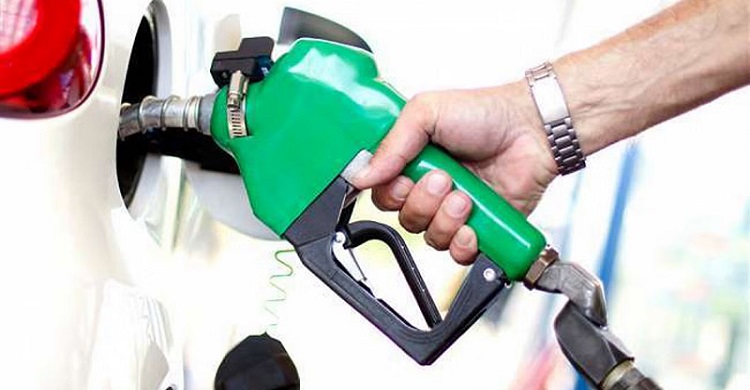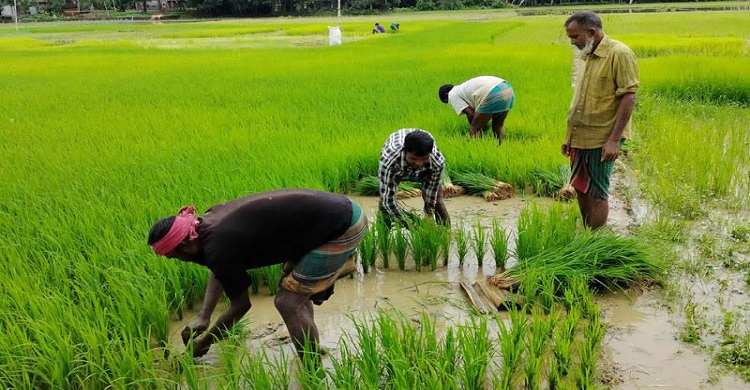
- Financial
In Sherpur, there is a possibility of revolution in aman cultivation
- Financial
- 10 August, 2021 09:56:20
Sherpur Correspondent: Local farmers are now busy cultivating aman paddy in Sreevardi of Sherpur due to favorable weather. Bolan saplings planted in remote areas of the upazila are being planted in the fields. The local farmers and agriculture department are hoping that this will revolutionize the yield. According to the Agriculture Office, the target for aman cultivation has been set at 16,000 hectares of land in Sreevardi Upazila in the current financial year. Cultivation in these lands starts every year at the beginning of Ashar. This time someone has already sown the seeds in the seedbed for early cultivation. However, now the work of planting by lifting from the seedbed is in full swing. Flood-affected farmers had already planted the seedlings in a small plot of land after lifting the seedlings from the seedbed. Now he is lifting it from there and planting it elsewhere. These transplanted aman saplings are flood tolerant. Rather the yield is also higher. For this reason, the cultivation of aman is increasing day by day in this manner. Farmers are cultivating in peace.
When I went to the spot on Sunday (August 8), I talked to Tara Mia, a farmer from Ranishimul Madhyapara village in the upazila. "We are struggling to make ends meet," he said. I planted Ahan Bijtala Thaikya Jbala Tuilla first. A month later, I planted this irritated tuilla in another field. Even if the paddy field is submerged in the flood water, it will not be destroyed. The yield is also higher
Aibo '. He further said that every year we cultivate aman paddy on about two and a half acres of land. Of this, about one and a half acre was flooded. Aman paddy fields have been destroyed in that one and a half acre land by flooding every year. For several years now, they have been cultivating various hybrid varieties of aman paddy in the same manner as they have heard from the farmers in the flood-hit areas. It does not cause any damage to the field even if it is submerged in the flood water once. Rather the yield is even higher. His neighbors Amjad Hossain, Fakir Mia, Fazal Mia, Alamgir Hossain and many other farmers in the flood-hit area said the same thing.
Shafiqul Islam, a farmer from Bilbhart village in the upazila, and Amjad Ali from Kakilakura, among others, said bumper yields had been achieved in boro cultivation. You also got a fair price for paddy. For this reason, many people have already made seedbeds and are now sowing seeds in the fields.
According to them, the cultivation of hybrid rice is increasing day by day. However, some farmers are cultivating some indigenous varieties of paddy including Paizum, Natishal and Tulshimala. Amjad Ali said that it is expected to rain in Musaldhara this month. But that amount of rain has not yet come. Due to this many people are delaying the cultivation of aman. Amer Ali of Bakchar village said, now there is no opportunity to irrigate. That is why we rely on rain. However, farmers in the lower areas are now engaged in aman cultivation.
In this regard, Upazila Agriculture Officer, agronomist Humayun Dildar said that the farmers of the flood-hit areas are adopting that method. It is easily protected from floods. The yield of paddy is also good. For this, the cultivation of aman saplings is increasing twice a day. He added that although the rains have hampered cultivation, there is still a long way to go. It will not have much effect on achieving the target. Because one more month ahead is the best time to cultivate aman. It will not be a problem of yield. If it rains, this problem will be solved. However, farmers and agriculture officials in the area think that the flood can be reduced by cultivating in the new method. And this can lead to a revolution in the cultivation of aman.
Comments (0)



























Comment ( 0)